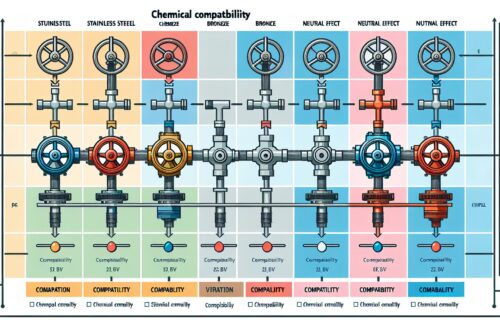
Butterfly Valves
In the world of arduous industrial work, valves play an indispensable role in controlling the flow and pressure of fluid. Amongst this wide spectrum of valves, one has been engineered to be versatile and practical on numerous fronts – the butterfly valve. The butterfly valve, aptly named for its butterfly-like disc which rotates to allow flow, is a favored choice in various industries for its cost-effectiveness, overall reliability, and performance. This article provides an in-depth exploration of the butterfly valve, describing its structure, function, variants, application, advantages, and how to select the perfect butterfly valve for your needs.
Structure and Working Principle
The butterfly valve is simplistic in design, comprising of the body, disc, stem, and a seal (or seat) [^1^]. The valve body provides the pathway for the fluid and comes with flanged ends for secure attachment to the piping system. The disc is the flow controlling element shaped like a butterfly, attached to the stem which enters the valve body perpendicularly. Lastly, the seal ensures no leakage occurs when the valve is closed.
The butterfly valve operates with a straightforward mechanism; when the lever (or actuator) attached to the stem is turned, it makes the disc rotate. At a 90-degree turn, the disc aligns with the flow, opening the valve and allowing fluid to pass. Rotating the disc back to its original position restricts the flow, closing the valve [^2^].
Classifications of Butterfly Valves
There are several types of butterfly valves, primarily categorized based on their construction, pressure handling capability, and the type of sealing they employ. Some common types are:
-
Concentric Butterfly Valves – Known for their resilient seals and low-pressure applications, these are the most commonly used butterfly valves.
-
Double-eccentric Butterfly Valves – These valves have a stem eccentric to the valve body centerline and provide lowered friction between the disc and seal, aiding in increased life span of the valve.
-
Triple-eccentric Butterfly Valves – Providing better sealing capabilities and excellent control over flow, these are suitable for high-pressure and high-temperature applications [^3^].
Applications of Butterfly Valves
Butterfly valves are highly appreciated in different industries for their versatility. They are used primarily to regulate flow in water distribution, sewage treatment, fire protection systems, and the oil and gas industry. Due to their exceptional pressure handling capability, butterfly valves are also embedded in high-pressure industrial applications like chemical plants and power generation sectors [^4^].
Benefits of Butterfly Valves
Butterfly valves bring various benefits to the table. They are compact and lightweight, making them easier to install and handle. They offer good throttling capabilities, allowing precise control over flow.
Moreover, butterfly valves are economical compared to other valve types. Their easy maintenance and longevity save operators from regular valve replacements and frequent shutdowns for maintenance.
Selecting a Butterfly Valve
While selecting a butterfly valve, factors like size, pressure rating, temperature and fluid characteristics, and type of seal must be considered. It’s crucial to thoroughly understand your process requirements, to ensure you select the appropriate butterfly valve to maximize operational efficiency [^5^].
Conclusion
Understanding butterfly valves and their utility in various sectors is vital when selecting the perfect flow control solution for your industry. While they might not suffice for all applications, their cost-effectiveness and excellent performance make them irreplaceable in numerous settings.
[^1^]: ValveMan. (2020). What is a Butterfly Valve and How Does it Work?. [online] Available at: ValveMan.com [Accessed 25 August 2021].
[^2^]: Martin, P. (2020). An Introduction to Butterfly Valves. [online] DirectMaterial.com. Available at: DirectMaterial.com [Accessed 25 August 2021].
[^3^]: Industrial Spec. (2018). Types of Butterfly Valves. [online] Available at: IndustrialSpec.com [Accessed 25 August 2021].
[^4^]: Petrolvalves. (2019). Application of Butterfly Valves in the Oil and Gas Industry. [online] Available at: Petrolvalves.com [Accessed 25 August 2021].
[^5^]: Dixon Valve US. (2020). How to Select a Butterfly Valve. [online] Available at: DixonValve.com [Accessed 25 August 2021].




